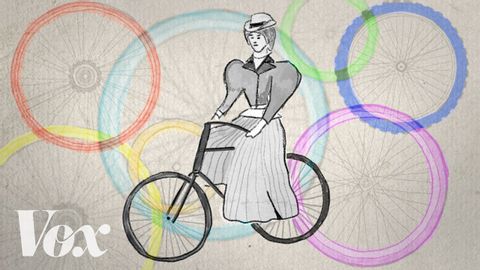
Subtitles & vocabulary
How bicycles boosted the women's rights movement
00
Samuel posted on 2018/01/10Save
Video vocabulary
depression
US /dɪˈprɛʃən/
・
UK /dɪ'preʃn/
- Noun (Countable/Uncountable)
- Medical condition of a lack of vitality
- Period of unemployment and low economic activity
B2
More quote
US /kwot/
・
UK /kwəʊt/
- Noun (Countable/Uncountable)
- Written statement of the cost of something
- The (often wise or famous) words of another person
- Transitive Verb
- To tell someone how much a task will cost
- To repeat precisely what a person said or wrote
A2TOEIC
More practical
US /ˈpræktɪkəl/
・
UK /ˈpræktɪkl/
- Adjective
- Relating to what is sensible, real or useful
- Relating to experience, action, or practice; not theoretical or ideal.
- Noun
- A practical exam or lesson.
- A person concerned chiefly with the practice of something; a person with practical skills.
A2TOEIC
More completely
US /kəmˈpliːtli/
・
UK /kəmˈpli:tli/
- Adverb
- In every way or as much as possible
- To the greatest extent; thoroughly.
A1
More Use Energy
Unlock All Vocabulary
Unlock pronunciation, explanations, and filters
